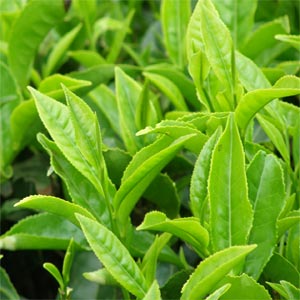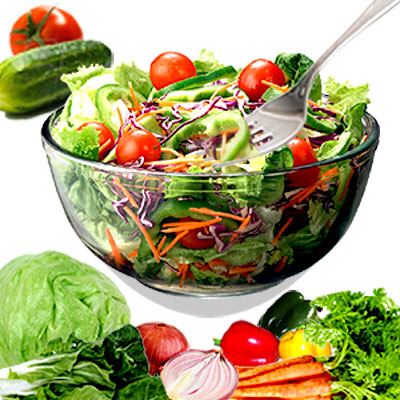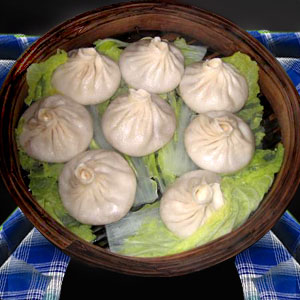Loose Green Tea

Green tea, as the name suggests is an herbal drink with medicinal value. The Chinese have known the medicinal benefits of green tea since time immemorial. They have used it to treat everything from headaches to depression. Though it originates from China, green tea is associated with many cultures in Asia including Japan and South Korea. Learn the subtle differences between Chinese green tea and Japanese green tea. Does loose green tea score over green tea bags? How does green tea aid weight loss?
Benefits of Green Tea
Green tea is believed to reduce the risk of cancer, prevent or alleviate rheumatoid arthritis and eliminate heartburn. Several scientific studies indicate the potential health benefits gained by drinking a cup of green tea. Few of them include:
- Reduction in heart disease
- Reduction in bad cholesterol
- Increase in metabolic rate / fat oxidization
- Prevention of the death of brain cells -lesser chance of Alzheimer's or Parkinson's diseases
- Lower incidence of cancers
- Aids weight loss
This apart, green tea is found to decrease the presence of acne and eczema. It is also used as a homemade mouthwash. According to scientific research, the presence of fluoride in green tea helps prevent tooth decay and strengthens teeth and gums. Hence, green tea is often times combined with other ingredients to create intriguing flavors of homemade mouthwash.
Green tea and weight loss
The slimming quality of green tea is known for more than thousands of years. Scientific research indicates that green tea helps to burn calories and block fat absorption.
Burns Fat: Food that we intake including sugar and fat is synthesized into a substance called 'Triglyceride' in the liver and small intestine. Through the bloodstream, it is distributed to other tissues in the body. These triglycerides are very vital to human body as they are the source of energy for life support and physical activities. However, excess amounts of triglycerides in human body turn to fat subsequently resulting in obesity.
Green tea contains high amounts of Polyphenols, which activate the enzyme that is responsible for dissolving excess triglyceride. Hence, green tea is considered as an effective aid in burning fat.
Stimulates the metabolism and accelerates weight loss: The powerful antioxidants, catechin polyphenols, present in green tea are mainly responsible for health benefits. Of these, epigallocatechin gallate (EGCG), in particular is very vital and is found to stimulate the metabolism and accelerate weight loss.
ECCG, along with the caffeine in green tea, stimulates the central nervous system and causes fat to be released in to the bloodstream. The body uses this fat as a fuel and this process of fat being used for energy is called 'thermogenesis'. It provides extra energy, sheds excess water, and helps to burn body fat.
Although caffeine alone can stimulate the metabolism this way, researchers indicate that the combined ingredients of green tea were much more effective at this process than just caffeine by itself.
The science of Green Tea
The vital component of green tea is polyphenol - an antioxidant. The polyphenols present in green tea are un-oxidized and hence are called catechins. It is scientifically proved that regular consumption of polyphenols can help fight various disease conditions.
These polyphenols strengthen immune and body cells, whilst weakening intruder cells and cancerous / tumor cells. It means that the body is now stronger and better able to fight diseases caused by weak cells.
Green tea is made from the leaves of Camellia sinensis, the same plant that is used to prepare black tea. Though both teas are from the same plant, the difference lies in their processing. Green tea is dried, but not fermented. The shorter processing gives green tea a lighter flavor than black tea. It also helps keep all the beneficial chemicals intact, which is why green tea is so good for you.
Green Tea Varieties
Many varieties of green tea are created in countries where Camellia Sinensis is grown. These varieties can differ substantially due to variable growing conditions, horticulture, production processing, and harvesting time.
There are two main types green tea, Chinese and Japanese. We get hundreds of varieties of tea from these two very different countries, each one with its own distinctiveness.
Japanese Green Tea
Japanese green tea or ocha is one of the most common beverages in Japan. It is intrinsic to Japanese food culture and is the central element of the tea ceremony. Following is the list of popular Japanese green teas:
Gyokura: It is a loose Japanese green tea made with dried tea leaves.
Sencha and Bancha: Sencha is the most popular green tea of Japan. It has a lightly astringent taste along with a slight sweetness. Lesser quality Sencha tea is called Bancha.
Houjicha: Another common tea, Houjicha is brown and made from roasted tea leaves.
Matcha: This is the traditional tea used in the Japanese tea ceremony. Made with tea leaf powder, Matcha is whisked when prepared. The flavor is light and sweet.
Japanese green tea is served in cups without a handle and sugar or cream is never added to the tea.
Chinese Green Tea
Dating back more than 4,000 years, Chinese green tea has been long revered as a tasty drink that can ward off diseases and improve one's well-being. Since its first recorded use during the time of Emperor Shen Nung, the link between tea and good health has never been severed. Listed below are few varieties of Chinese tea:
Dragon Well Tea: Also called, Lung Ching, this is claimed as the ultimate green tea. The tea is produced with water from a legendary well in the West Lake region of China and is named after it. Dragon well tea is bright green in color with quite a brisk flavor.
Anji Green tea: Grown in the Zhejiang region of China, the tea is very popular for its fine and subtle flavor. It has thin leaves that look almost black in a dry form.
Pi Lo Chun: Meaning 'green snail spring', it is a Chinese tea from the Fujian province that produces a sweet and mellow cup of tea with mild vegetal notes.
Loose green tea advantages
As with any traditional tea, green tea leaves are also packed into paper. People find in convenient and easy to brew. However, many researchers indicate that loose green tea is more preferable than green tea bags for long time health benefits.
Variety of flavors and health benefits: Green tea leaves are un-oxidized and contain life-giving nutrients such as catechins, theanine, chlorophyll, Vitamin C, and small amount of essential oils.
The whole leaves are chopped, sliced and diced into small particles (ranging from 0.2 to 1.5 millimeters) to accommodate in a tea bag. With much higher surface to volume ratio, these particles lose freshness quickly. In addition, the tea compounds interact with moisture and oxygen, leading to rapid quality loss.
Above all, the tea particles are finally bagged into papers, which are more likely to suffer from long shelf life.
Less Caffeine: According to a 1996 American study, extraction of caffeine was higher from the tea bags than those loose leaves. This is because tea bags contain green tea that is broken into pieces.
Higher Leaf Grade: Quality of green tea is influenced by many factors, the most important being - the leaf age. The highest-grade green tea is tippy, as they grow at the top of the tea bushes.
These are young tea shoots harvested early in the season and consist of just one bud with up to 2 slightly unfurled leaves. The quality of green tea depends on the harvesting season. Spring grows the best green tea while summer the worst.
Scientific studies indicate that young tea shoots contains highest level of theanine and EGCG. Theanine promotes calmness and aid concentration while EGCG is the most powerful and abundant antioxidants present in green tea. No doubts, such high grade is only available in loose-leaf and not tea bags.
Top of the Page: Loose Green Tea
Tags:#green tea #green tea benefits #Japanese green tea #green tea weight loss #loose green tea #Chinese green tea #herbal green tea #green tea fat burner
 Food and Nutrition Facts
Food and Nutrition Facts Chamomile
Parsnip Soup
Dim Sum
Gazpacho Soup
Whole Grain Cereal
Jicama Nutrition
Bok Choy Stir Fry
Chia Seeds Benefits
Teff Nutrition
Kaniwa
Flax Seed
Wheatgrass Benefits
Kelp Benefits
Types of Chili Peppers
Medicinal Benefits of Pomegranate
Arugula Leaves
Maca Root
Pitaya Fruit
Benefits of Celery
Leek
Asparagus Benefits
Oyster Stew
Oyster Mushroom
Lupin Beans
Quinoa
Freekeh
Extra Virgin Olive Oil
Dill Pickle
Sauerkraut
Fat Burning Foods
Nutrition Chart
Food Combining
Calorie Counter
calories ...
Non Alcoholic Beverage
Punch Recipes
Food Label Nutrition
Homemade Sausages
Cooking Steak
Eating on a Budget
Budget Friendly Recipes
Quick Recipes
 Healthy Packed Lunch
Healthy Packed Lunch Overnight Oats Recipes
Eggplant Casserole
Brunch Recipes
Burrito Recipes
Muffin Recipes
Cupcake Frosting
Apple Crisp
Stir Fry Cooking
Seafood Salad Recipe
Cooking Corn on the Cob
Finger Food Recipe
Sandwich Recipe
Bread Stuffing Recipes
Easy Chili Recipes
Picnic Recipes
Edible Mushroom Recipes
Mushroom Soup Recipes
Dip Recipe
Tapas Recipe
Corned Beef Recipe
Canned Salmon Recipe
Tilapia Recipes
Crumb Cake
Flourless Chocolate Cake
Regional Food
 Lasagna Recipe
Lasagna Recipe Peruvian Ceviche
Chinese Food Recipe
Vietnamese Food Recipe
Malaysian Food
Korean Food Recipe
Indian Curry Recipe
Edible Rice Paper
Mexican Food Recipe
Quesadilla
Guacamole Dip
Italian Food Recipe
Spanish Food Recipe
Kosher Food
Falafel Recipe
Tandoori Chicken
Noodles
Canape
Couscous
Meatloaf
Chowder
Gumbo Recipe
Crockpot Recipes
Moroccan Food
Healthy Food
Pre Workout Snack
Matcha Tea
Simple food Swaps to Lose Weight
Foods to Beat Stress
Foods to beat Insomnia
Bone Density Foods
Prebiotic Foods
Kefir Grains
Agave Nectar
Spicy Trail Mix
Pesto Sauce
Homemade Hummus
Crab Cake Sauce
Bamboo Shoots Nutrition
Lemon Grass Plant
Butter Beans Recipes
Loose Green Tea
Seaweed Nutrition
Healthy Food
Low Fat Granola Bar
Steel Cut Oatmeal
Fruit Pizza
Pizza Toppings
Green Smoothie
Healthy Meal Planning
Delicious Mealtime Recipes
Heart Healthy Fats
Healthy Heart Recipe
Healthy Dinner Recipe
Healthy Dessert Recipe
Healthy Fast Food
Healthy Kid Recipe
Probiotic Food
Diabetic Friendly Foods
Fruit Salad Recipe
Bread Pudding
Tofu Recipe
Oat Bran
Broccoli Salad
Avocado Recipe
Iron Rich Food
Brain Foods
Antioxidant Food
Natural Diuretic
Low Fat Cooking Tips
Rice Pilaf Recipe
Low fat Chicken Recipe
Food Tips

Sous Vide Cooking Technique
Natural Sugar Substitute
Stevia Sugar Substitute
Sunflower Seeds Nutrition
Bouquet Garni
Cake Decorating Tips
High Satiety Foods
Thanksgiving Dinner
Safe Food Storage
Frozen Food Storage Tips
Cold Storage Food Tips
Leftover Recipe
Food Pyramid
Dairy Free Food
Microwave Cooking
Food Intolerance
Homemade Ice Cream
Apple Cider Vinegar
Benefits of Honey
Beverage Cooler
Food Poisoning Symptom
Food Allergy Symptom
Food Addiction
Top of the Page: Loose Green Tea
Popularity Index: 102,060

